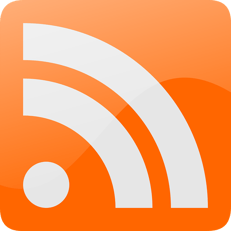Let us inhale the vapors of the Sacred Tree and pull back the mists of time to reveal one of the most ancient and storied forms of internet content distribution: the RSS feed.
RSS feeds have existed since before the advent of social media in the mid-2000s. They were popular because of the complete control they gave the user over the forms of content they received on the various applications attuned to their usage. This form of content distribution has been at the heart of many digital media phenomena such as podcast hosting and blogging due to the streamlined and user-centric design of RSS feeds which allow consumers to subscribe to their favorite content.
What is an RSS feed?
An RSS feed is a format of syndicated internet content that can be distributed to a variety of different platforms. “RSS feed readers” continuously check for updates to the RSS file feed and change or add to the content they display accordingly.
In this guide, we’ll cover what makes an RSS feed and how you can use it for your own content.
RSS feeds: the artery of your online content
Let’s get right to it: RSS stands for “really simple syndication.” At the core, RSS is comprised of stripped-down files that are compatible across the various platforms meant to read, receive, and display the delivered content.
These platforms, known as “RSS feed readers,” automatically check the feed of whatever content is submitted to them for any changes or updates and instantaneously deliver the new content to the platform. They don’t require any sort of form submissions, emails, or cumbersome terms of service.
Just download and start reading!
History of RSS
But Peter, I hear you plaintively ask, if RSS feed readers are so easy and convenient, where are they? Why is no one using them in 2019?
Initially, RSS feeds were the dominant form of media distribution on the internet. They fueled the boom of blogs that characterized so much of the early internet and made it easy and painless for users to access the content they cared about.
RSS files started off fairly simplistic; usually only containing text or a few images. However, they developed more complex offerings such as videos and music alongside the evolution of internet content.
The golden age of RSS came to a screeching halt when the explosion of social media websites such as Facebook and Twitter quickly dethroned RSS readers as the dominant source of content on the internet. Through a combination of slick UI design, personalization, and social-psychological factors that keep our monkey brains constantly seeking the next reward from the corporate serotonin farmers, social media has replaced RSS feeds—and then some.
While the result of this has been a decline in popularity and ubiquitousness of RSS feed readers in the internet’s cultural zeitgeist over the past few years, RSS feeds still have a place on the internet as independent sources of content distribution.
RSS feed readers
There are a variety of RSS feed readers to choose from. We’ve selected some of the best and have them listed here for your convenience:
 Image of the feed reader known as Vienna
Image of the feed reader known as Vienna
FlowReader is an excellent choice for anyone wanting to consume content at their computer. It has the dual functionality of letting you see RSS only content as well as keeping up to date with all the goings-on of social media in one place.
While Feeder is one of the more basic RSS feed readers, it has the benefit of looking nice and functioning extremely well on either a mobile app or on a computer. It also has extensions for most web browsers such as Chrome or Firefox that allow you to quickly add the content you want to your feed.
No frills, no fuss. Feedreader is one of the most widely used free RSS feed readers and with good reason. It has no ads and allows you to sort content by customizable categories. What’s not to love?
How to subscribe to an RSS feed
RSS feed readers still remain as one of the easiest methods on the internet for accessing content. Let’s break down how this is done:
- Select and download your choice of RSS feed reader
- Go to the site of your choice
- Select the RSS icon to have the content automatically delivered to your RSS feed readers
Generally, most websites have this RSS symbol to indicate that there is a feed you can download:
 The iconic RSS feed logo
The iconic RSS feed logo
Clicking on this sometimes results in opening a separate page that asks you to confirm whether or not you want to subscribe to that content. Make sure to select “yes” and you should be good to go!
Happy reading!
If you're interested in producing or consuming content on the internet, you need to know what an RSS feed is and how to use it. After reading this guide, you have everything you need to access the content you want.
 by Piper Thomson
by Piper Thomson
 by Piper Thomson
by Piper Thomson
 by Piper Thomson
by Piper Thomson